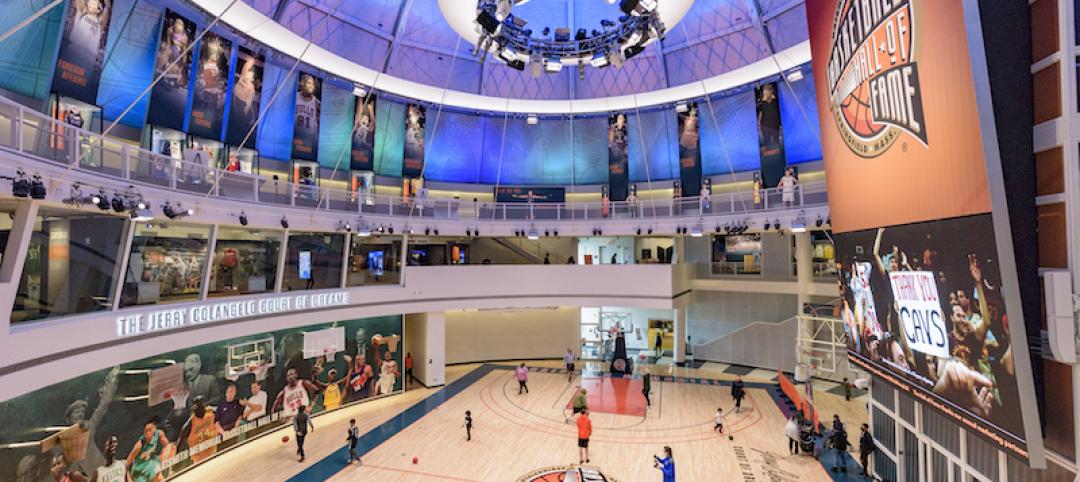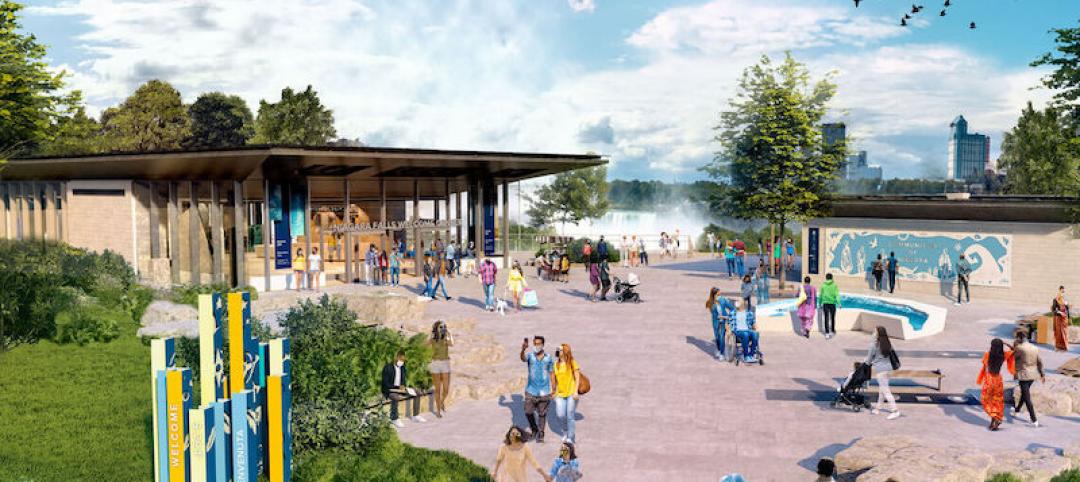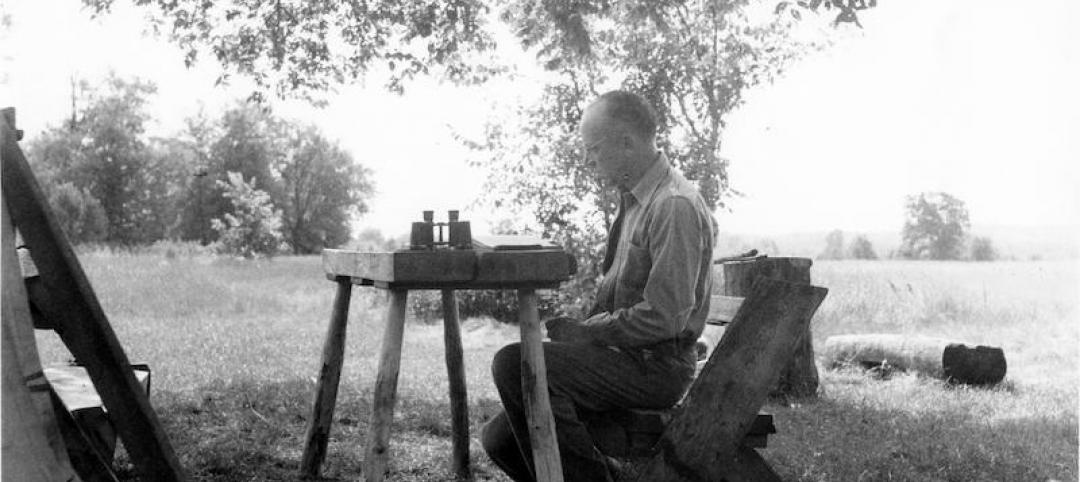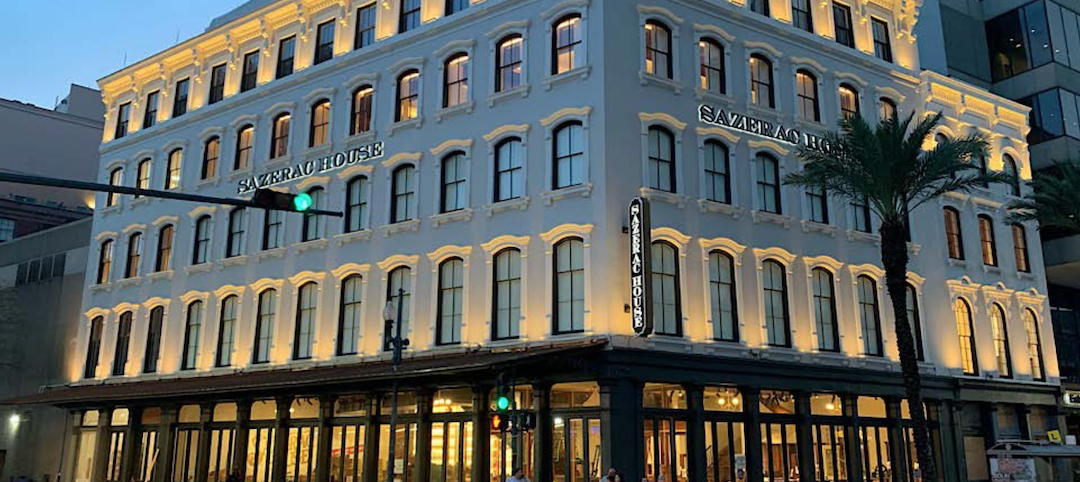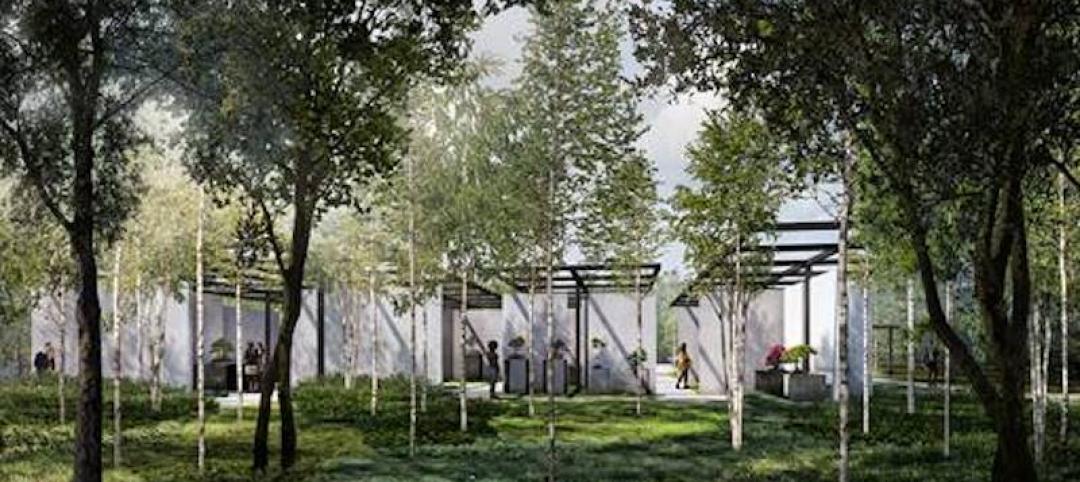The Twist, an inhabitable bridge torqued at its center that winds over the Randselva river in Norway, both acts as a piece of infrastructure to connect two riverbanks in northern Europe’s largest sculpture park and doubles the Kistefos Museum’s indoor exhibition space.
The structure is conceived as a beam warped 90 degrees near the middle to create a sculptural form as it spans the Randselva. The twist in the building’s volume allows the bridge to lift from the lower, forested river bank in the south up to the hillside area in the north. Visitors roaming the park’s site-specific works cross the bridge to complete the art tour through the sculpture park.

From the south entry visitors cross a 16 meter aluminum-clad steel bridge to reach the double-height space. The double-curve geometry of the museum is composed of straight 40 centimeter wide aluminum panels arranged like a stack of books, slightly shifted into a fanning motion.
See Also: Bjarke Ingels Group creates 66 homes for low-income citizens in Copenhagen
The curved form of the glass windows allows for a variety of light to enter the museum, creating three distinctive galleries: a wide, naturally lit gallery on the north side with views of the nearby historic pulp mill and river via a full-height glass wall; a tall, dark gallery with artificial lighting on the south side; and a sculptural space with a twisted sliver of roof light that connects the other two spaces.

A glass staircase leads down to the lower level on the north river embankment where the building’s aluminum underside becomes the ceiling. Restrooms and a full-width glass wall are located on this level.
The project is BIG’s first in Norway.



Related Stories
Museums | May 19, 2021
Naismith Memorial Basketball Hall of Fame opens after $25 million renovation
CambridgeSeven designed the project.
Wood | May 14, 2021
What's next for mass timber design?
An architect who has worked on some of the nation's largest and most significant mass timber construction projects shares his thoughts on the latest design trends and innovations in mass timber.
Education Facilities | May 3, 2021
Khor Kalba Turtle and Wildlife Sanctuary completes in the United Arab Emirates
Hopkins Architects designed the project.
Museums | Apr 27, 2021
GWWO Architects unveils design of the new Niagara Falls Visitor Center
The project will replace the current outdated and cramped facility.
Market Data | Feb 24, 2021
2021 won’t be a growth year for construction spending, says latest JLL forecast
Predicts second-half improvement toward normalization next year.
Museums | Jan 28, 2021
Arkansas Arts Center to undergo $142 million transformation into the Arkansas Museum of Fine Arts
Studio Gang is designing the project.
Reconstruction Awards | Dec 29, 2020
The reenvisioned Sazerac House: A delectable cocktail that's just perfect for the Big Easy
The 51,987-sf Sazerac House is an interactive cocktail museum, active distillery, corporate headquarters, and event venue, all under one roof, next to the historic French Quarter of New Orleans.
Giants 400 | Dec 16, 2020
Download a PDF of all 2020 Giants 400 Rankings
This 70-page PDF features AEC firm rankings across 51 building sectors, disciplines, and specialty services.
Museums | Nov 16, 2020
Design of the National Bonsai and Penjing Museum unveiled
Reed Hilderbrand and Trahan Architects designed the project.



